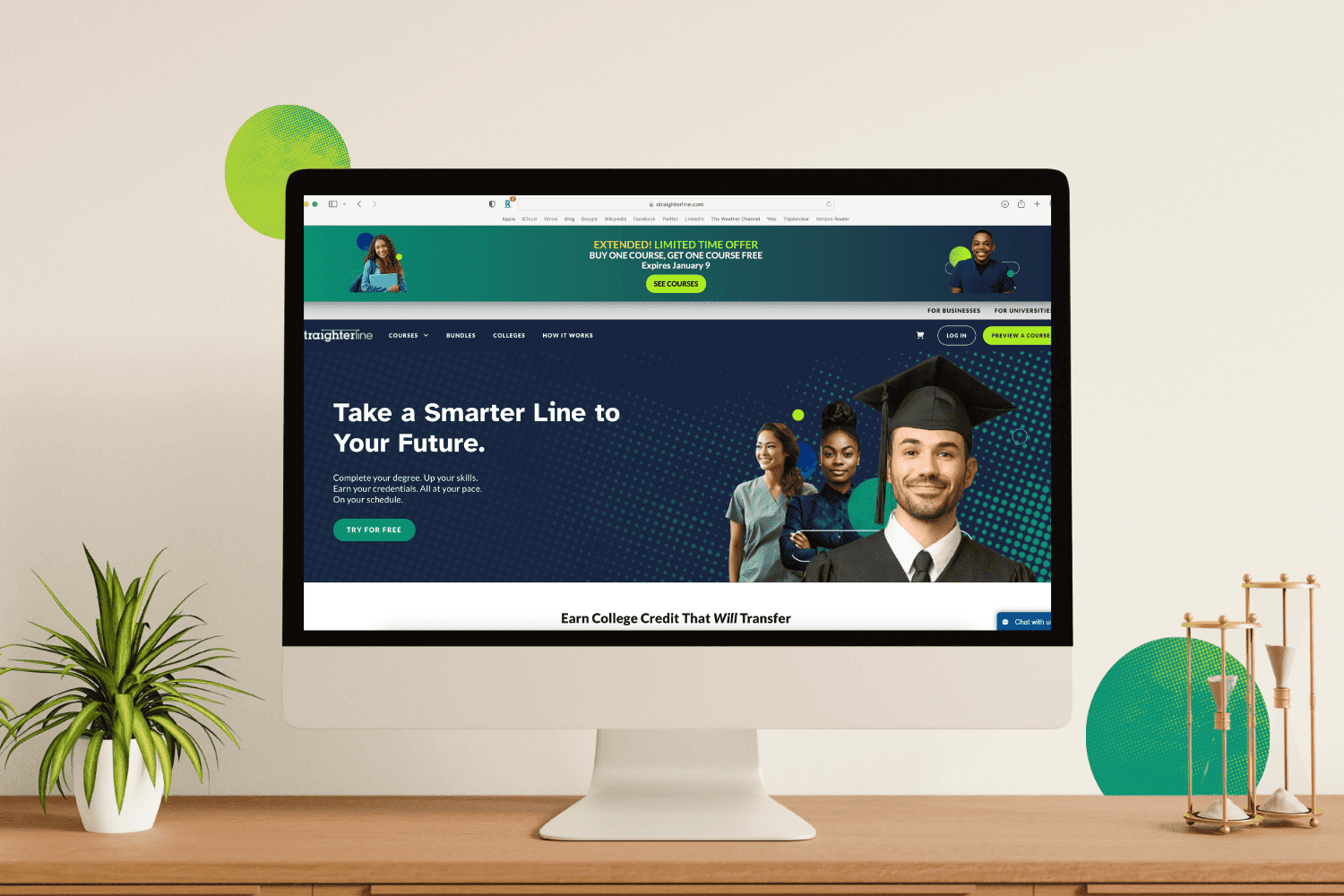Are you considering a career in education? Earning a degree in education will help you make a difference every day in a field where passion meets impact. For many, teaching is more than a career: it’s a calling, with teachers vocal about the profound effects of quality education in their communities.
Are you ready for a teaching career? Whether it’s your first profession or a career pivot, numerous education career paths await you. To help you explore your options, we've prepared this simple guide.
What Can You Do with a Degree in Education?
When reflecting on those who have significantly impacted your life outside of your family, at least one of them was likely a teacher. Teaching is an important and rewarding profession, and a degree in education may offer more opportunities than you realize.
Salaries and growth projections are current as of this writing and subject to change.
Kindergarten & Elementary School Teachers
Average Salary: $45,082-$52,101
Job Growth: About 109,000 openings for kindergarten and elementary school teachers through 2032.
What They Do: Kindergarten and elementary school teachers prepare young students for middle school by teaching basic subjects like math and reading. They use a hands-on approach to help students understand abstract concepts, solve problems, and develop critical thinking skills.
Middle School Teachers
Average Salary: $57,503
Job Growth: About 42,200 openings for middle school teachers are projected through 2032.
What They Do: Middle school teachers educate students in sixth through eighth grade, helping them build on elementary school knowledge and prepare for high school. In some districts, middle school may start in fourth grade or extend to ninth grade. Teachers may specialize in specific subjects or instruct the same class in every subject.
High School Teachers
Average Salary: $57,056
Job Growth: About 67,100 openings for high school teachers are projected through 2032.
What They Do: High school teachers prepare students for life after graduation by teaching academics and essential skills. They typically specialize in a particular subject area, such as math or art, and may teach multiple classes within that area. High school teachers usually adapt their lessons to accommodate students from different grades and abilities.
Special Education Teachers
Average Salary: $61,098
Job Growth: About 33,500 openings for special education teachers are projected through 2032.
What They Do: Special education teachers work with students who have a range of disabilities and adapt general education lessons for them. They teach various subjects to students with mild to moderate disabilities and basic skills to those with severe disabilities.
These teachers often collaborate with general education teachers, specialists, administrators, and parents to develop Individualized Education Programs (IEPs) for students based on their goals and required services.
English as a Second Language (ESL) Teachers
Average Salary: $56,698
Job Growth: About 4,200 openings for ESL teachers are projected through 2032.
What They Do: ESL teachers, also known as ESOL (English for Speakers of Other Languages), help non-English speakers read, write, and speak English. They commonly work at all school levels from K-12 with new immigrant students.
School Administrators
Average Salary: $106,959
Job Growth: About 31,930 new jobs are projected by 2029.
What They Do: School administrators manage schools and school districts, overseeing staff, budgets, educational programs, curriculum design, and recordkeeping. They may also serve on committees such as academic boards or governing bodies.
Guidance Counselors
Average Salary: $60,409
Job Growth: About 26,600 openings for school counselors are projected through 2032.
What They Do: School counselors assist students with academic and social skills, career planning, and navigating personal challenges. Elementary school counselors work directly with students who may be struggling and collaborate with parents. Middle school counselors focus on decision-making and transitioning to high school. High school counselors advise on academic and career planning, provide information on college and career options, and offer support with personal issues.
School Principals
Average Salary: $96,525
Job Growth: About 20,200 openings for elementary, middle, and high school principals are projected by 2032.
What They Do: School principals oversee all school operations, coordinate curriculums, manage staff, and ensure a safe learning environment for students. They set academic goals, supervise programs, implement standards, evaluate student achievement and teacher performance, and serve as public representatives of their schools.
How to Start a Career in Education
Starting a career in education requires a combination of formal education, certification, and hands-on experience. Whether this is your first career or you’re transitioning from another field, here’s how to get started.
Education
To work in K-12 education, you need at least a bachelor's degree from an accredited college or university. Required courses for education majors typically include:
Prospective teachers usually also complete state-approved teacher preparation programs and participate in student teaching experiences to round out their education. We’ll discuss both in more detail below.
Real-World Experience
Although most education degree programs include real-world experience, it’s not always a formal requirement for graduation, but it’s almost always a formal requirement to become certified to teach on your own.
Practical experience can provide teachers with insights and skills that inform their teaching in live classroom scenarios. This experience usually happens in the form of student teaching, a full-time commitment generally lasting at least 13 weeks.
During this time, you'll progressively take on teaching duties under the supervision of a guiding teacher, including daily classroom operations, lesson planning, and creating an engaging learning environment for students. This experience allows you to apply your knowledge and skills in an actual classroom setting while still receiving feedback from an experienced mentor.
Certifications and Licenses
To become a K-12 teacher in the United States, you need to obtain the appropriate certifications and licenses. After completing your degree, you must enroll in a state-approved teacher preparation program, which often includes a student teaching internship.
Once you meet the educational requirements, you must pass state-specific certification exams that assess your teaching skills and knowledge. After passing these exams, you can apply for an initial teaching license or certification. Some states offer alternative certification programs that provide accelerated pathways for individuals transitioning from other careers.
Most states also require new teachers to complete a period of supervised teaching, often referred to as an induction program, during their first years of teaching. After fulfilling these requirements and gaining some teaching experience, you can apply for a professional or permanent teaching license, which may involve additional assessments and professional development.
Continuing Education
Professional development opportunities throughout a teacher's career can help bridge the gap between classroom instruction and real-world skills. Most states require educators to earn a certain number of continuing education units (CEUs) or credits every year or every few years.
Is a Teaching Career Right for You?
This checklist may help you decide whether teaching is the right career path for you.
- Do you have good communication skills? Are you adaptable and a good listener?
- Can you engage young people? Do you like interacting with children or teenagers? Are you a good role model?
- Are you organized and self-motivated? Are you good at following processes when things don’t go as planned?
- Do you want to make a difference in your community with your career? Are you looking for a professional calling that will positively impact others’ lives?
If you answered yes to most of these questions, there’s a good chance that a teaching career path would be a great fit!
Get Started on Your Teacher Career Path
Whatever your educational goals may be, StraighterLine can help you get there! While we don’t offer degrees, we can help you save time and money on your way to a degree in education. Check out our Education Studies bundle that grants you transferable credits on the most common courses for education majors.
Learn more about how StraighterLine’s credit transfer process works and about our 70+ affordable courses, which you can take entirely online and at your own pace. Try a class for free today!












